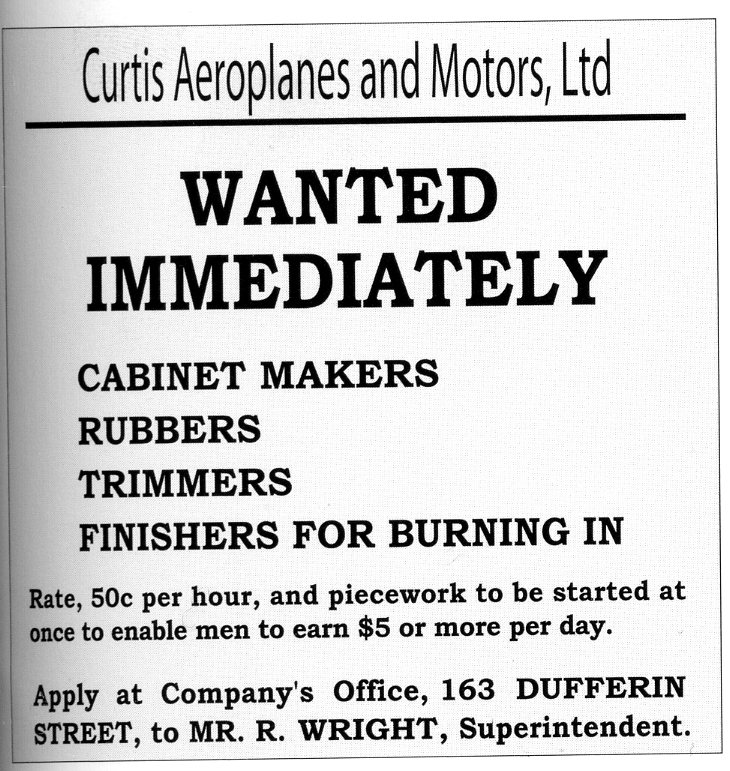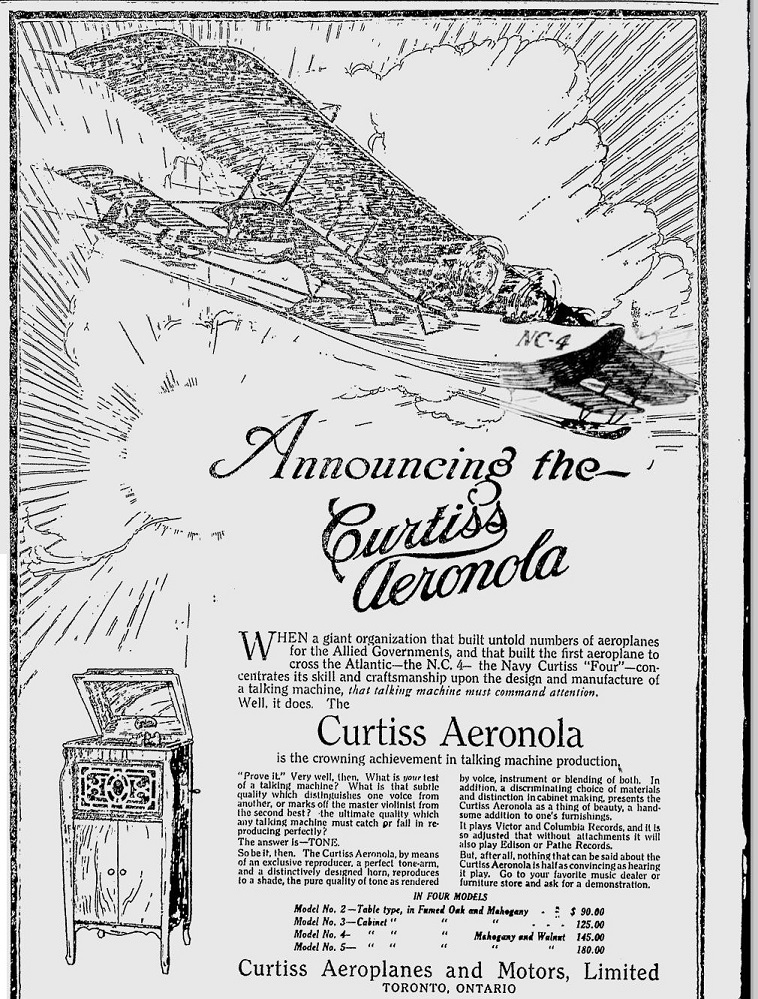Curtiss / Aeronola

On the motor:
Glenn Curtiss was an aviation
pioneer born in upper state
In an effort to expand his
production, Curtiss built a plant in
Curtiss was friends with
Alexander Graham Bell who in turn was friends with
Emile Berliner. Berliner
helped
After the war ended in the
spring of 1919, Curtiss retook possession of his
plant and dedicated a part of it to become the
gramophone factory on Dufferin.
The factory was meant to produce up to 300
units a day. They were
recruiting cabinet makers, rubbers, trimmers and
finishers: rate 50 cents per hour up to 6 dollars a
day. At 50 cents an
hour it would have taken 2 months of work to enable
you to buy my Model number 5.
There was a strong ad
campaign in the fall of 1919 enticing vendors to
pre-order their aeronola’s for
Christmas. I fear that
the orders didn’t come in.
History leads me to believe
that Curtiss fell on hard times in 1920 (the company
was forced into receivership) and the gramophone
production facility became the General (car) Top
Company in August of 1920. The
Curtiss Company was then managed by Canadian
financier Clement Keys who brought it back to
prosperity sans gramophone production.
My gramophone was
brilliantly refurbished and refinished in the fall
of 2006 by Robert Nix “The Gramophone Doctor” of
According to Larry Milberry in "Aviation in Canada: The Pioneer Decades" (CANAV Books, Toronto, 2008), "While Canadian Aeroplanes Ltd. suddenly was out of airplane manufacturing [after WW I] and selling off equipment, Toronto might have been surprised to see advertisements placed in local papers in July 1919 by Curtiss Aeroplanes & Motors Limited seeking tradesmen. The company earlier edged out by CAL [Canadian Aeroplanes Limited] was back in business. One Curtiss ad read "Wanted Immediately Cabinet Makers Rubbers, Trimmers, Finishers for Burning In. Rate 50cents per hour, and piece work to be started at once to enable men to earn $6 or more per day. Apply at Company's Office, 163 Dufferin Street, to Mr. Wright, Superintendent." In that neighbourhood, it is likely that Curtiss was using some CAL floor space. In 1919, however, Curtiss was building no airplanes. Instead, it was turning out some general products, but specialized in a new home entertainment fad--the phonograph. By now, with a great wave of postwar prosperity, every family craved a phonograph. (page 164)

On page 79, below an advert in the Globe and Mail, like the ones below, he states "At war's end Curtiss kept its plant operating at least into 1920 producing such non-aviation products as high-end "home entertainment systems". The Aeronola record player was a big item. In its advertising, Curtiss made good use of its aeronautical roots, showing Santa as delivering Aeronolas in his own JN-4 on skis."
Milberry then goes on to describe an item in the Globe, October 21, 1919 which reported that the Columbia Gramophone Company secured the vast production facility of CAL.
July 1919:
October 1919 (two pages):
Machine photos from Wayne Cowie .
He also sent: "Serial number looks like 4M716 Motor # 137612."
Machine photos from Mike Gignac, 2013 ser# is 30655 and the motor # is 169454:



Jennifer Mueller contributes the following advertisement published in the Globe and Mail, Saturday November 29, 1919 (page 18):

KW found this one, Edmonton Journal Sept. 27, 1919 pg 19:

Stephen McKendry-Smith sends the following pictures regarding a machine he bought from the Winnipeg Art Gallery in the early to mid '90s.